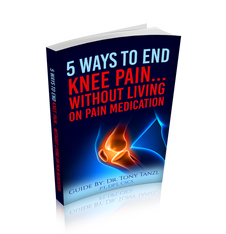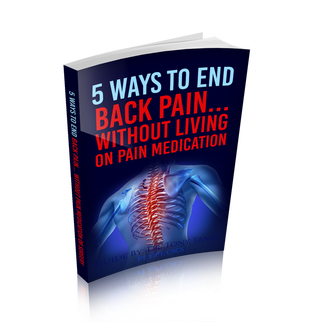|
It’s officially Fall! And it won’t be long before the temperature becomes a lot cooler and the days shorter. The morning air will start to feel brisk, and before you know it, it’ll be time to start thinking about winter coats and hats – which is why the sudden transition from summer to cooler months can feel like a challenge. And with that also comes the time for the annual onslaught of feeling under the weather as our bodies adapt. But it doesn’t have to be that way – well, not entirely at least. While you can’t completely avoid catching bugs and colds, you can give yourself and your immune system a helping hand to make sure you feel healthy, and great, this season. And no, that doesn’t mean drinking all of those ‘vitamin-boost’ drinks, and fizzy tablets to make sure you’re set-up…  With that said, here’s 5 tips to help you keep healthy during fall and feeling well: 1) Boost Your Immune System This one can tie in with both fall and winter, but that’s because it’s an important one. You need to boost your immune system to help prevent those annoying colds and sniffles that always happen as the weather changes. Drink plenty of water, wash your hands often to prevent sickness and eat nutritious foods that are proven to help your immune system such as; broccoli, garlic, almonds, and poultry. You can also drink green tea as a way to warm up on those bitter mornings and fill your shopping cart with in season fruits and vegetables. 2) Get Yourself Ready For The Clocks Going Back This is the one that always trips people up! Switching from light mornings where the sun naturally wakes you, to darker mornings that still feel like night, can be a big struggle. But by going to bed earlier, especially the week before the clocks change, can have a massive impact on how you deal with the clocks changing. Longer periods of darkness = longer periods of sleep! And you’ll find it easier to throw that blanket off in the morning. 3) Buy In-Season Foods There’s so many great choices, but here’s just a few; apples, brussels sprouts, cabbage, carrots, onion, parsnips, pumpkin… I could go on but these are just some of the choices you have for in-season foods. Think delicious slow-cooked dinners, hearty soups and roasted vegetables. Probably one of my favorite times of year when it comes to food. 4) Stay Active! This is my favorite one. It can be really easy to sit around during the day when it starts to get colder, but it’s important to get in some daily movement. Getting outside and going for a walk is a great one – it can help get rid of your stress, lowers your risk of Alzheimer’s, tones you up, keeps you moving no matter what your age and burns calories! What’s not to love about going walking during the fall months with all of the scenery we have at our doorstep? And with a hot coffee in hand – it’s perfect. 5) Make Plans For The Cold Months A lot of us will just ‘hibernate’ if we don’t have things to do during the day as it starts to get colder… The best way to help with this is to make plans. It’s so simple! You can even use the time to kill two birds with one stone and make plans to go for a walk with friends – that way you’re keeping active and you’ve made sure that you don’t spend the day hibernating on the sofa. Don’t get me wrong, it can be good to do occasionally when you need to relax – but it’s important to make sure you do things so all of those good habits you created during the warmer months don’t get left behind. How will you be keeping active, healthy and feeling fit this fall? P.S. I know it’s easy to say to “go for a walk to keep active when the seasons change”, but what if you’ve got knee pain that feels worse when it gets cold, making you worried to walk and keep active in case it gets worse? If that sounds like you, here’s a free guide you can download that gives you easy tips you can do to help ease knee pain.
1 Comment
Have you ever fallen into the droopy-sleepy-yawny-have-no-energy trap? When both the middle of the morning and the middle of the afternoon feel like bedtime? Ugh. I have. Back when my breakfast consisted of mainly grain-based cereals or processed and refined breakfast pas- tries. Add to that a cup or two of sugar-sweetened coffee in the morning and a couple of corn syrup–sweetened caffeinated beverages in the afternoon, and I was left with a roller coaster of inconsistent energy levels.
All of that changes when you started avoiding refined sugars and processed and packaged breakfast foods. Dips in your energy evens out into one steady stream of reliable energy. What a difference a consistent pep in your step makes! I contemplated naming these “All Day Energy Muffins,” because these moist morsels give you wings—more so than any energy drink I’ve ever tried. Check out the ingredients and you’ll see what I mean: flax, almonds, eggs, banana, apple, pecans—I doubt you could find a muffin recipe with more goodness crammed into it than this. No really, don’t waste your time looking—just make these and enjoy! Courtesy of RealHealthyRecipes.com Servings: 12 Here’s what you need
Instructions
Nutritional Analysis 145 calories, 10g fat, 11g carbohydrate, 6g sugar, 318mg sodium, 3g fiber, and 4g protein. I wanted to answer a common question I get asked about being stiff which we get asked regularly by patients at Empire Performance PT: “Tony, do you have any advice for someone like me who isn’t in a lot of pain? I’m just incredibly stiff when I wake up on a morning, and I feel it throughout the day which means I can’t do things as easily as I’d like. Any advice?” I’ve go plenty of tips and advice to help reduce stiffness. But first I want to clear up ‘why’ we feel stiff in the first place. A lot of people we see think that stiffness is something we feel as we get older – and while there’s some truth in that, stiffness isn’t always directly related to how old you are. Yes, as you get older your joints and muscles might get stiff if you don’t exercise regularly… and it’s true that your joints become less flexible as the lubricating fluid inside them decreases, and the cartilage becomes thinner as you age… But there’s some other points to factor in too. Not drinking enough fluids and dehydration can also lead to stiff muscles. Muscles are active tissues, which means they’re the kind of tissue that requires the most water in the body. Inactivity is another culprit – leaving your muscles in one place for a prolonged period (sleep, sitting in a chair, driving for hours etc.) can cause them to stiffen. Another cause can be related to stress – when we’re in a state of stress, our bodies tighten up as preparation for a “fight or flight” situation. Prolonged stress can lead to you maintaining a tight posture, resulting in strain on the muscles  So what can you do to reduce the side-effects of stiffness? Here’s five quick and easy tips to add to your daily routine that will help you find a life with less stiffness no matter what age you are. 1. Stretch – daily. Ten minutes on a morning when you first wake up, and ten minutes on a night before bed. Doing gentle stretches just before bed can help you get a much better nights sleep as well. No equipment needed, just you and the comfort of your own home (and some good music if you like). 2. Walk – for at least ten minutes a day (even better, twenty if you can). Next time you need to make a long phone call, why not do it on your mobile and walk at the same time? 3. Avoid long periods of sitting – you’re better off laying stretched out on the sofa than you are sitting in a chair for long periods of time. We’re NOT designed to sit, and stretching out can be a nice relief for muscles and joints, especially if you’ve had a long day at work sat in a chair. 4. Take a warm bath – with epsom salt or baking soda. The heat and combination of epsom salt or baking soda will ease your muscles almost immediately and will calm your mind. The perfect way to end your day and unwind before getting a good nights sleep. 5. Drink plenty of water -Seventy percent of your muscles are water. So it makes sense that you need to drink plenty of water to support your body and keep it hydrated. My tip – have a glass of water by your bed ready for when you wake up on a morning, that way the first thing you do is drink a glass as soon as you wake to kick-start your day. It’s sad but a lot of people accept stiffness in their life as though it’s normal and nothing can be done about it. Stiffness in your joints such as your neck, shoulders, back and knees is a sign that something needs to be done by you. So there you have it, five things you can very easily put into action in your day as soon as today, to reduce stiffness and prevent it from making daily activities difficult to do. Don’t accept stiffness as part of life, if you do and you don’t do anything about it, it’s likely to worsen and affect your ability to move freely. P.S. If you’re experiencing stiffness in your back which restricts your ability to move without pain, click here to download my free back pain tips guide which includes actionable tips I give to my patients at Empire Performance PT. Goodbye, boring old tuna sandwich. Hello, gorgeous Spicy Tuna Wrap!
Honestly, who needs bread when you can wrap spicy tuna goodness in blanched collard greens? Not me. These wraps are light and tight, and will help make you light and tight too! The technique of wrapping delicious sandwich fillings in collards is a wonderful way to lighten up your lunch. Collard leaves are super sturdy, last for a week in the fridge, are filled with fiber, and are super low in carbs and calories. The rich green color is nice too. Make a big batch of these on the weekend to create wraps for lunch all week long. Simply bring a big pot of salted water to boil, blanch the leaves for 2 minutes, then plunge into some ice water before drying off. Easy! Courtesy of RealHealthyRecipes.com Servings: 2 Here’s what you need
Instructions
Nutritional Analysis 317 calories, 13g fat, 17g carbohydrate, 7g sugar, 193mg sodium, 4g fiber, and 7g protein. We had a gentleman stop by in our clinic last week and he asked us this…
“Is walking bad for my knees?” He told us he started to experience knee pain a few years ago when walking down the stairs and thought nothing of it at first, and thought it was just something that would ‘wear off’ with time. But when he noticed the pain in his knees every time he either went down the stairs, or walked up and down hills with his dog, he thought he better do something about it. So he went to his Doctor, who at first told him to rest and to take painkillers to help ease the pain. But the word ‘rest’ can be confusing… What does ‘take some rest’ even mean? Does rest mean you have to sit on the sofa cooped up inside all day when you’ve got things to do? Does it mean no walking until your knee feels a bit better? And then when it does, how much walking, is too much? Does it mean you have to avoid exercise altogether? Being told to rest, and take painkillers is one of the most common things we hear when people are given ‘knee pain’ advice, but the thing is, this cocktail mix of rest and taking pills will do absolutely nothing to help you get back to being active… And it will 100% not get to the root cause of what brought on your knee pain in the first place so you can start to get back to living life without it. In fact instead of ‘rest’, you should actually move! (As long as it’s not a serious knee injury that’s caused damage). Now I know if you are one of the many people suffering with knee pain, you might be worried to use your knees and might want to take some time off to let your knees heal, but walking is a safe, low-impact activity, that can actually help get you on the road to recovery. You see when we don’t move our joints they become stiff and immobile, which can cause inflammation – which actually makes joints like our knees even MORE painful! If you’ve had a serious knee injury that’s actually caused damage, then that’s another story altogether… But if you’re experiencing daily, annoying knee pain then there’s some simple things you can do to keep moving, and walk safely, without making it worse. Something as simple as changing your shoes and gentle bodyweight exercises anyone can do from their comfort of their own home, are just two examples. When it comes to shoes, have you thought about getting a good pair of walking shoes? Walking shoes should have good cushioning and shock absorption, so if your shoes are old and have lost their cushioning, you should replace them. If you have low arches (and your feet roll inwards as you walk), a shoe with enhanced support, or a pair of orthotic inserts, will help alleviate the stress on your knees. Always begin a walk with a slow, gradual warm-up, and try to get out for a walk during a time in the day when your knee pain doesn’t feel bad. Begin with short walks and build up time and distance gradually, rather than jumping into a 30 minute walk straight off the bat. When it comes to simple exercises, doing safe strengthening exercises for the legs can help keep your knees in good walking condition. Bodyweight exercises like squats, calf raises and glute bridges are good choices. Flexibility exercises for the leg muscles help maintain movement and range of motion in your joints and reduce the amount of strain places on them. Always warm up before stretching and performing any of these exercises and don’t over-do it. It’s important that you never feel pain when you do these movements. Knees are made to bend. They’re designed to help us walk, kneel down, bend to help us grab objects, walk up and down the stairs – not to stay still and rest all day! (Which is what a lot of people are told to do!) Start slow, with gentle walking and strengthening exercises, and builds up slowly so you can do more. Although it may feel like knee pain is something you’ll have to learn to live with and might not be able to be as active as you once were – that’s not always the case. Don’t just accept rest and taking painkillers as your only solution – there’s a way to get back to living a life you enjoy. Here’s a new way to serve up nutritious veggies with protein-packed chicken. It’s tender, flavorful and simple to make. Basically a perfect meal!
This dish is great for meal prep, as it holds up well for several days in the fridge and can be easily packed in Tupperware to eat on-the-go. Enjoy! Courtesy of RealHealthyRecipes.com Servings: 6 Here’s what you need
Instructions
Nutritional Analysis 217 calories, 2g fat, 12g carbohydrate, 3g sugar, 208mg sodium, 2g fiber, and 24g protein. Warning: Only make this recipe if you want to take your taste buds on a seriously wild ride! The spice and flavors in this Cajun Grilled Shrimp are on full blast! I highly recommend serving this firecracker shrimp over cauliflower rice dressed in lemon juice for cooling, calming flavors that create the perfect balance for spicy shrimp. The shrimp grills very quickly, so be sure to have everything else prepared and ready to be served before you get those shrimps on the barbie… :-) Courtesy of RealHealthyRecipes.com Servings: 4 Here’s what you need For the Cajun Spice Blend:
For the Shrimp:
For the Cilantro Dressing:
Instructions
Nutritional Analysis 202 calories, 12g fat, 2g carbohydrate, 1g sugar, 716mg sodium, 1g fiber, and 21g protein. |
AuthorDr. Tony Tanzi: Physical Therapist, Triathlete, Runner, Performance Coach Archives
October 2022
Categories |



 RSS Feed
RSS Feed